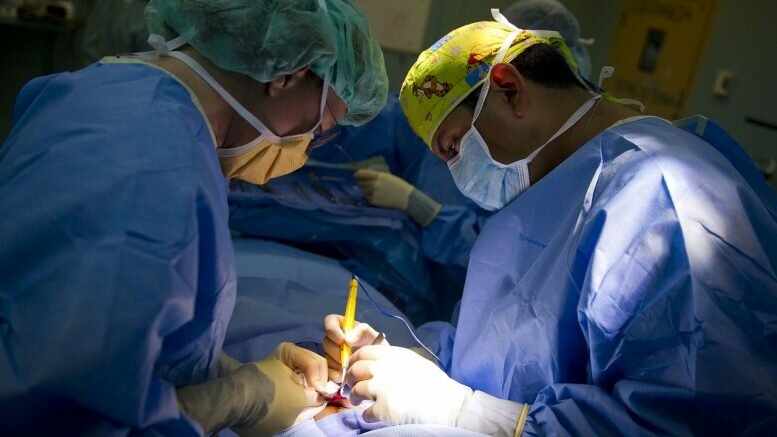Norway spent NOK 65 000 per capita on health in 2017; about NOK 2 000 per capita more than in 2016.
The preliminary figures for 2017 show that Norway’s current health expenditure was NOK 342 billion. This accounts for 10.4 per cent of Norway’s GDP.
Adjusted for inflation, the health expenditure per capita has grown by 0.3 per cent from 2016 to 2017. From 2013 to 2017 the health expenditure per capita has grown by an annual average of 1.4 per cent. Investments for health purposes were about NOK 21 billion in 2016 and in 2017.
Norway’s health expenditure compared with other countries
There are large variations in the level and growth of health spending across the OECD. Naturally, countries with a lot of resources and high incomes spend more on health than countries with less resources and lower incomes. Health expenditure as a share of GDP is often used in international comparisons of health spending and can shed light on how much of the available resources in a country are devoted to health.
In 2017, the health expenditure in Norway accounted for 10.4 per cent of GDP, a decrease from 10.5 per cent in 2016. According to the latest available OECD figures, the OECD average was 9 per cent in 2016. While the USA spent 17 per cent, Turkey spent only 4 per cent on health in 2016. In the Nordic countries, the health spending to GDP ratio in 2016 ranged between almost 9 per cent for Iceland and 11 per cent for Sweden. Hence, Norwegian health spending is on a par with the other Nordic countries when measured as a share of GDP in 2016.
In 2006, at the peak of the business cycle, Norway’s health spending to GDP ratio was 7.9 per cent. The share increased for some years and has been above 10 per cent from 2015–2017. In addition to the business cycle, this development should be analysed in conjunction with the developments in the oil and gas industry. Due to a fall in the oil and gas prices, Norway’s current GDP fell from 2014 to 2016. Coupled with a simultaneous increase in Norway’s current health expenditure, this led to an increase in the share of health expenditure to GDP.
To remove the effect of fluctuations in oil and gas prices, we often look at health spending as a share of GDP for mainland Norway. This share has been more stable, ranging between 11 and 12 per cent from 2009-2015. In 2016 and 2017, this share was 12.0 and 12.2 per cent respectively.
Which health services does Norway spend most on, and who produces them?
Norway’s health services are largely produced by the central and the local government. However, private corporations and non-profit institutions also produce some health services. Additionally, some services are imported from abroad. This year we have distributed Norway’s current health expenditure in 2015 by producing sector. 2015 is the last year from which we have detailed information.
Norway’s current health expenditure was NOK 315 billion in 2015. The central government produced 69 per cent of these services and functions. While 25 per cent of the health services Norway paid for in 2015 was produced by private corporations or imported from abroad, the equivalent share for non-profit institutions was 6 per cent.
Curative and rehabilitative care includes hospital services, doctor visits, dental visits and physiotherapy etc. Curative and rehabilitative care account for the largest share of the current health expenditure, about 50 per cent in 2017. All OECD countries spend most of their current health expenditures on curative and rehabilitative care. Almost 63 per cent of Norway’s consumption of these services was produced by the central government. The equivalent share produced by private corporations in Norway or abroad was almost 24 per cent. Private corporations mainly produce general and dental outpatient care.
Health-related long-term care also constitutes a large proportion of health spending in Norway, with 28 per cent in 2017. This percentage is relatively high compared to other OECD countries. The Nordic countries and the Netherlands also use a large proportion of their health spending on these services. Local government, which is responsible for both inpatient and home-based long-term care, produced over 89 per cent of the health-related long-term care services included in Norway’s health expenditure in 2015. Eleven per cent of this was produced by non-profit institutions.
About 11 per cent of Norway’s current health expenditure is used on medical goods. Compared to other OECD countries, this share is low. Only pharmaceuticals that are bought over the counter are included in this category. Most of the medical goods included in Norway’s current health expenditure in 2015 were imported, and the remainder were produced in private corporations.
Other health services and functions are ancillary services, preventive care and administration. While both central and local government are responsible for preventive care, the central government accounts for most of the ancillary services and the health administration.
Source: SSB / Norway Today



